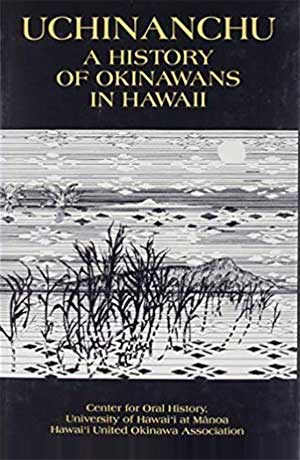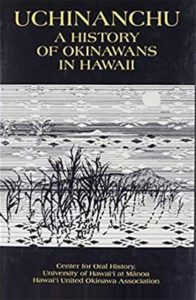
(copyright 1981, used by permission)
The Start of Jikoen Hongwanji

Amazon »
In response to the aspiration of the Reverend Chiro Yosemori, missionary with the Hawaii Hongwanji Mission, the Jikoen Temple was established on Houghtailing Street in Honolulu in September 1938 with assistance from Okinawans and others of the same faith. The Hongwanji was so moved by the zeal of Jikoen members that it extended help in building a dormitory for young people.
World War II
When the Reverend Yosemori returned to Japan in June 1941, his nephew the Reverend Jikai Yamasato succeeded. In September of the same year, the Jikoen’s Buddhist Womens Association was formed to launch a missionary movement but WWII broke out to cut it short. The Reverend Yamasato was interned on the mainland (Wisconsin, Tennessee, Louisiana, Montana, New Mexico) and all mission work had to be suspended. However, when the peak of the Pacific War was over in 1944, Shohei Miyasato, a lay member, re-opened the Jikoen Temple for services. Jikoen was the first temple to re-open before the end of the war.
Highlights of Jikoen Accomplishments Up to 1980
In December 1945, the Reverend Yamasato returned from internment camp and started religious wok again. To list the highlights of Jikoen’s achievements:
- Immediately after the war’s cessation, the Jikoen Temple published JIKO and other pamphlets to offer spiritual support for issei who were still in shock and dazed by the trauma of war.
- Jikoen was actively involved in various relief movements aimed at restoring war-devastated Okinawa. The total amount of aid rendered is estimated to be worth at least several hundred thousand dollars.
- In 1957, Jikoen Temple sponsored the joint Japan-United States memorial service on the 13th anniversary of the war dead of Okinawa. Many dignitaries from both Japan and the United States participated and the event was instrumental in creating goodwill.
- Jikoen also undertook a greater role in the cultural and social growth of its members by sponsoring kendo, dancing, go and poetry writing as well as Buddhist Women’s Association and the Young Buddhists Association activities.
Presently the Jikoen Kyodan, an incorporated religious group in support of the temple, is headed by Dr. Albert Miyasato, with Albert Teruya, Yasuo Uezu, and Shoshin Nagamine as financial advisors.
Move to North School Street
In 1961, Jikoen moved from its Houghtailing site to the present site, about one and half acres at the corner of North School and Kalihi Streets. It took four years to build the present temple buildings at a cost of about $500,000. The main building houses the chapel on the second floor. The Lumbini Preschool and the parsonage for the Reverend Yamasato are located on the first floor. Also there the Okinawa Memorial Hall with a seating capacity of 643.
Largest Stone Outside of Okinawa
Within the compound stands a massive stone monument, about 130 inches high and 63 inches wide, weighing 25 tons, the largest Okinawan stone outside of Okinawa. It was brought from Okinawa by courtesy of the United States Navy and erected in 1965 in commemoration of the 65th anniversary of the Okinawan immigration to Hawaii. On its surface is engraved, in four huge characters, the spirit of the Okinawan immigration overseas, “SHIKAI KEI-TEI” (ALL WITHIN THE FOUR SEAS ARE BROTHERS) in the calligraphy of Dr. Nobumoto Ohama, the president of Waseda University in Tokyo.
